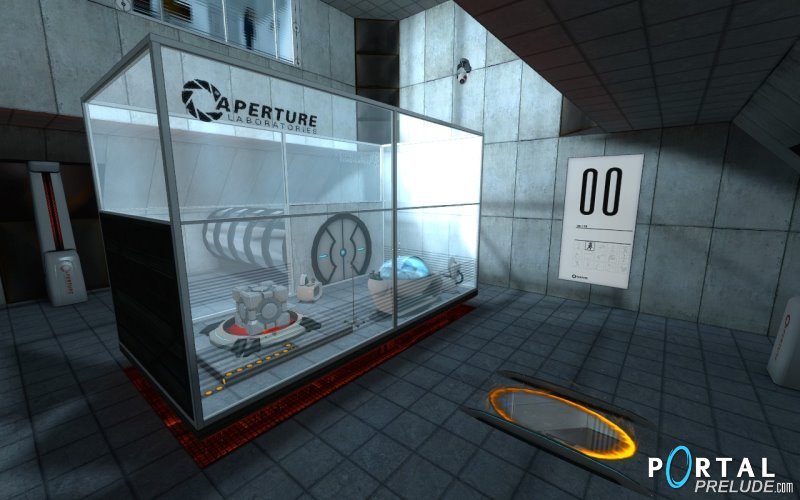Because the PR engine is revving past the red line for Portal 2 right now, there's quite a few people who're still trying to figure out just what's up with the robots, weird ads and portal guns. So, for the like... four of you who didn't play the first Portal, here's what I would suggest:
Play. The. First. Portal.
There's really no other way to describe or explain the wave of emotions people experience when they hear the synthesized malice of GLaDOS' voice, the plork sound of a portal hitting a surface, or the knee-jerk reaction that comes from hearing someone even humming "I'm Still Alive".
(Seriously, my friend was humming it at the table once and I kicked him without thinking twice about it. Jerk.)
So what's all the fuss about? Why are people crying themselves to sleep with their Weighted Companion Cube plushies, only to wake up screaming in the middle of the night "THE CAKE IS A LIE!!"?
Commencing Exercise
The first Portal wakes you up in a test chamber at the Aperture Science Laboratories. A computerized voice guides you out of the chamber and into a series of tests and puzzles, eventually unlocking a portal gun that lets you make wormholes wherever you want and overcome the various obstacles in your path.
The tests are a bit dangerous in some cases, with pools of watery acid that can kill you, lasers that can kill you, and eventually even armed robotic turrets that cheerily chip "Where are you?" before they try to kill you. They also scream when you deactivate them, which is just one of the many things that slowly begin to creep you out.
You see, no one else is around while the tests are going on. There are office spaces behind hazy windows that look over the test chambers, but nobody's in them that you can see. The now-glitchy voice of GLaDOS is the only thing to keep you company (besides the occasional Weighted Companion Cube) while you solve test after test.
Then when you find the first crawlspace behind the stark white test chamber whiles, it gets REALLY creepy. Someone has been through the tests before you, leaving behind used supplies and mad scribbles on the wall with the infamous "The Cake is a LIE" repeated over and over. You get the feeling that there isn't actually going to be a party with your coworkers at the end of the tests...
...and then GLaDOS tries to kill you.
After that things get hectic, quick. You escape the deathtrap and have to find your way through the dingy crawlspaces that keep the test chambers operational, discovering abandoned office spaces, empty conference rooms and other signs that point to the fact Aperture Science has vacated the premises, and that's it's just you... and her.
Eventually, you confront GLaDOS and terminate her with extreme prejudice. The entire facility explodes, throwing you outside onto a parking lot. Before you black out, you hear another computerized voice thanking you as it drags you away.
For Science.
So it sounds like a typical "robot goes crazy and tries to kill you after torturing you" premise, but with puzzles. But the people who made the game not only made a infinitely clever playground in the portal test chambers, which have multiple (and crazy) ways to solve them because of the portals' flexibility, they also crafted a very emotional story and characters that get under your skin and stay there.
GLaDOS is a fiend, but even if you don't trust her from the beginning of the game you find yourself reluctantly doing what she tells you because you really don't have a choice. Soon you begrudgingly accept she's going to be an irritating foil you have to ignore during your testing, which gets harder and harder until you're completely focused on the portals and ignoring her... and you forget that she's TRYING TO KILL YOU.
The stark simplicity of the test chambers (at first) also makes the little things really stand out, like the empty offices and scribbled warnings on the walls. When those warnings because signposts during the second part of the game, indicating someone else may have escaped, they at first elicit hope... which you then begin to question, wondering if they're just another part of the test.
The game designers' efforts to emotionally involve and immerse the players in the story and world of Portal made it a much deeper experience than most video games. It's that ability to elicit and create an emotional experience that moves it beyond juts simple puzzle games or even deeper roleplaying games, which often spend more time on story than on gameplay.
That strong story foundation also let the designers of Portal 2 focus on cranking up the challenge of the portal rooms, adding new and interesting tools for the players to use as they try to figure out just what GLaDOS is up to this time.




No comments:
Post a Comment